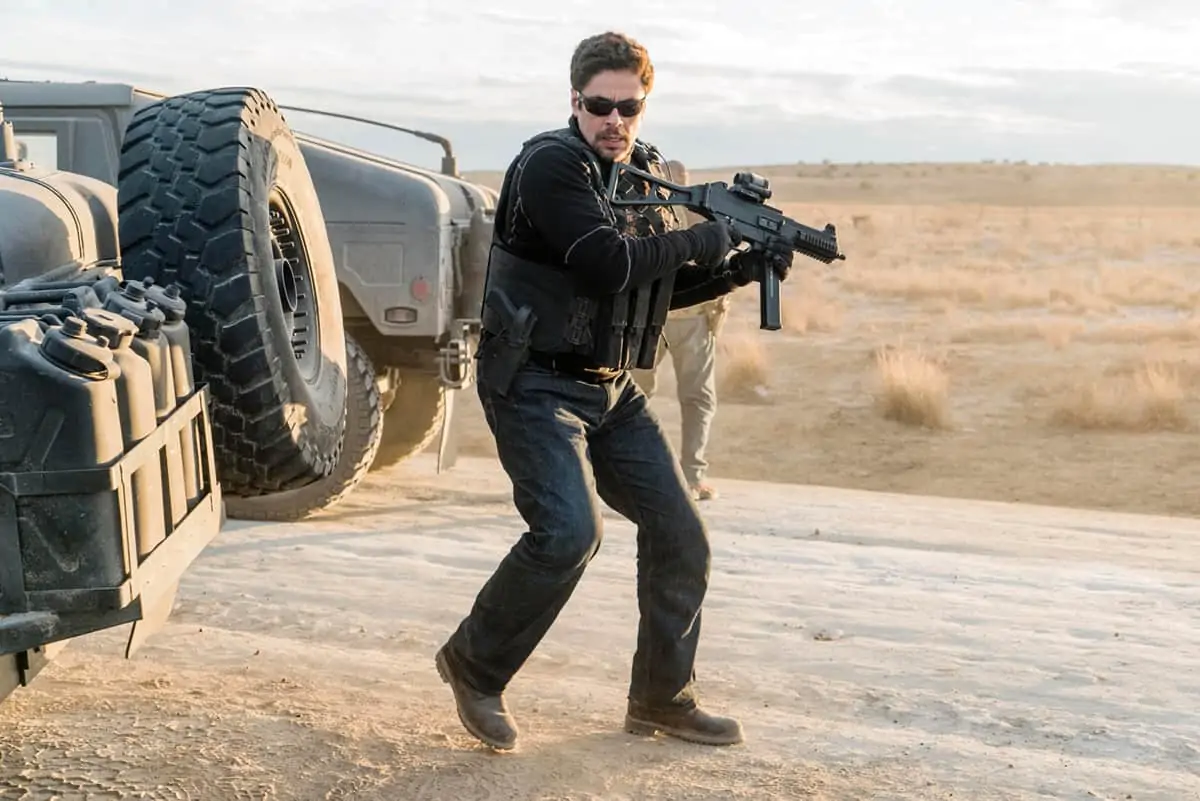Biblical Proportions
Dariusz Wolski / Exodus: Gods and Kings
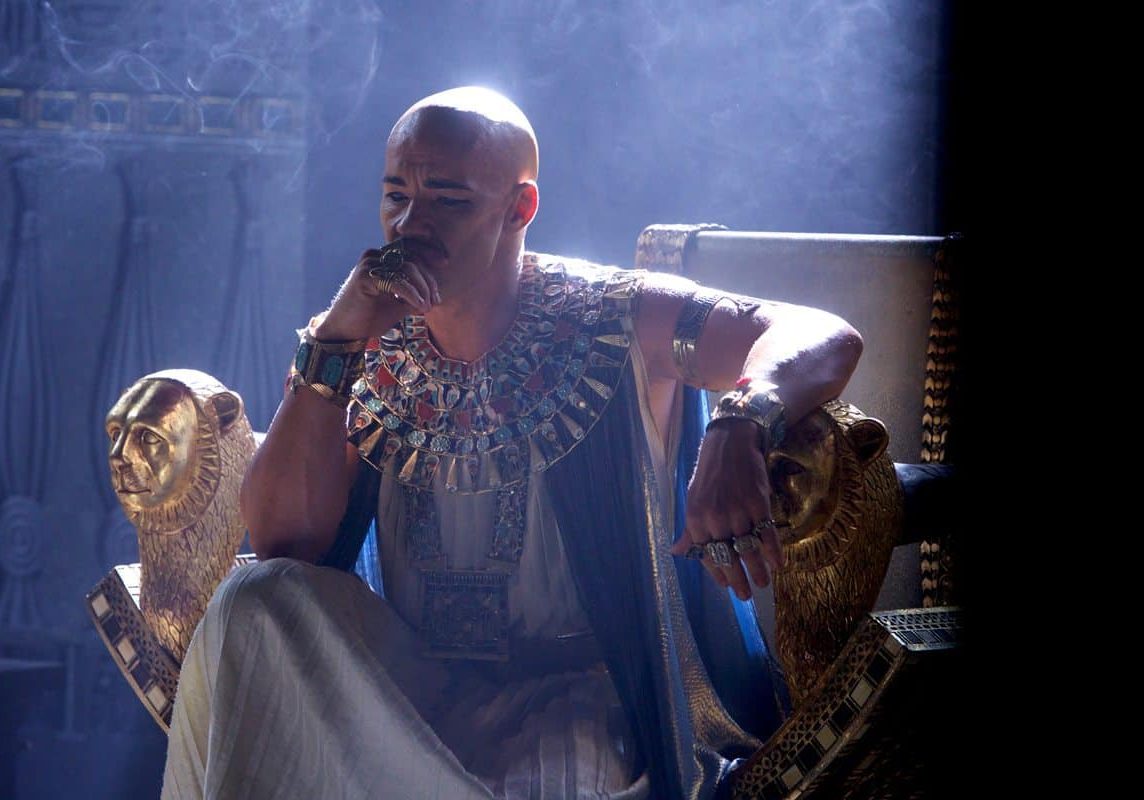
Biblical Proportions
Dariusz Wolski / Exodus: Gods and Kings
BY: David Wood
Exodus: Gods And Kings is Dariusz Wolski's third collaboration with Ridley Scott, following Prometheus and The Counselor. But not his last. The Polish born cinematographer is currently working with Sir Ridley on The Martian, an adaptation of a sci-fi novel by Andy Weir about a man struggling for survival on Mars. Starring Matt Damon, The Martian is currently shooting in Budapest, Hungary, reports David Wood.
Exodus was shot over several months on three stages at Pinewood Studios, primarily the Richard Attenborough Stage, with exteriors filmed on location in Fuerteventura, Canary Islands and Almeria, Spain – a place first made filmically famous as the backdrop to many of Sergio Leone's spaghetti westerns.
The big budget 3D adventure from Twentieth Century Fox, produced by Chernin Entertainment and Scott Free Productions, sees the Gladiator director return to familiar sword and sandals territory. The hugely ambitious retelling of the Old Testament story of Moses, features an impressive cast, headlined by Christian Bale as Moses and Joel Edgerton as Egyptian Pharaoh Ramses.
The line up also includes Sigourney Weaver, Aaron Paul, Ben Kingsley, John Turturro and 1,300 visual effects shots, which bring large-scale chariot battles, the ten plagues meted out by God on the Egyptians, and the famous exodus of 600,000 Israelites across the Red Sea, to life.
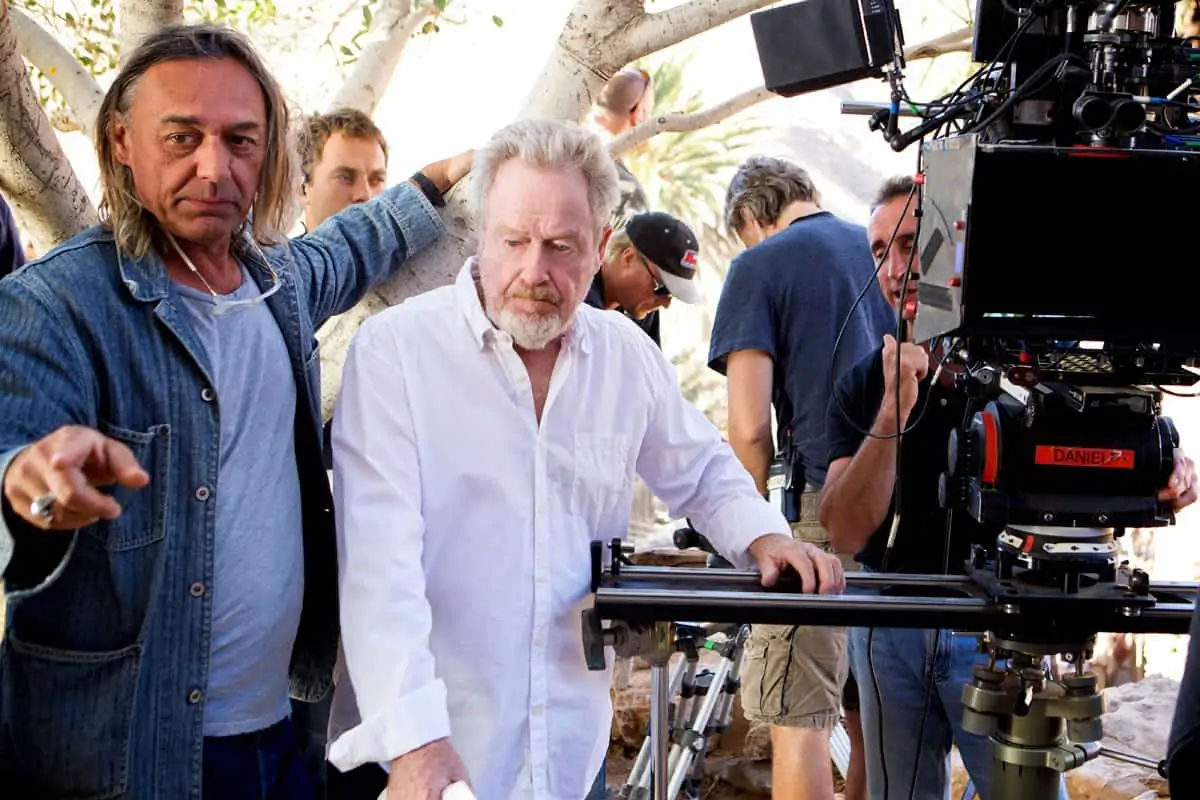
You have established yourself as a regular collaborator with Ridley Scott over the last few years. How did your relationship begin?
DW: I had done a couple of films with Tony Scott, including The Crow and Crimson Tide, and I have always stayed in touch with the family. So it was impossible for me not to think of Ridley as a major visionary as I developed as a cinematographer – in fact we were all in acute awe of him. I really started working with Ridley in earnest when 3D became a big theme a few years back. I had just done Alice In Wonderland for Tim Burton and Pirates Of The Caribbean for Rob Marshall (both in 3D), which at the time was a very new technology, and which few people knew much about. Ridley asked me to his office to talk about what I knew about shooting in 3D. For my part I just explained what I knew about its pros and cons.
What was the creative starting point for Exodus: Gods And Kings?
DW: I didn't go back to the original text or anything like that. Whilst there was a lot of discussion about the Old Testament story of Moses throughout the project, as a text it is so distant, and it has been through so many interpretations, that it was more about retelling the myth, rather than trying to find any kind of essential truth about the story. In fact, the more you look into the actual biblical story, the more you realise how little we really know about it. And the more you realise how much the way it has been visualised has changed over the years.
In terms of inspiration we looked at old neoclassical paintings of Ancient Egypt created around the time of the discoveries of the 19th Century Egyptologists. The paintings were very rich, slightly neoclassical interpretations of what that period, 3,000 years ago, might have looked like. We took a little from that. But the basic visual inspiration for the film came from a really well-researched art department run by production designer Arthur Max.
His amazing illustrations helped us envisage the huge sets, which would define the visual style of the film. The ideas were big, and so the next step was to ask ourselves: “ How are we going to make it work?”
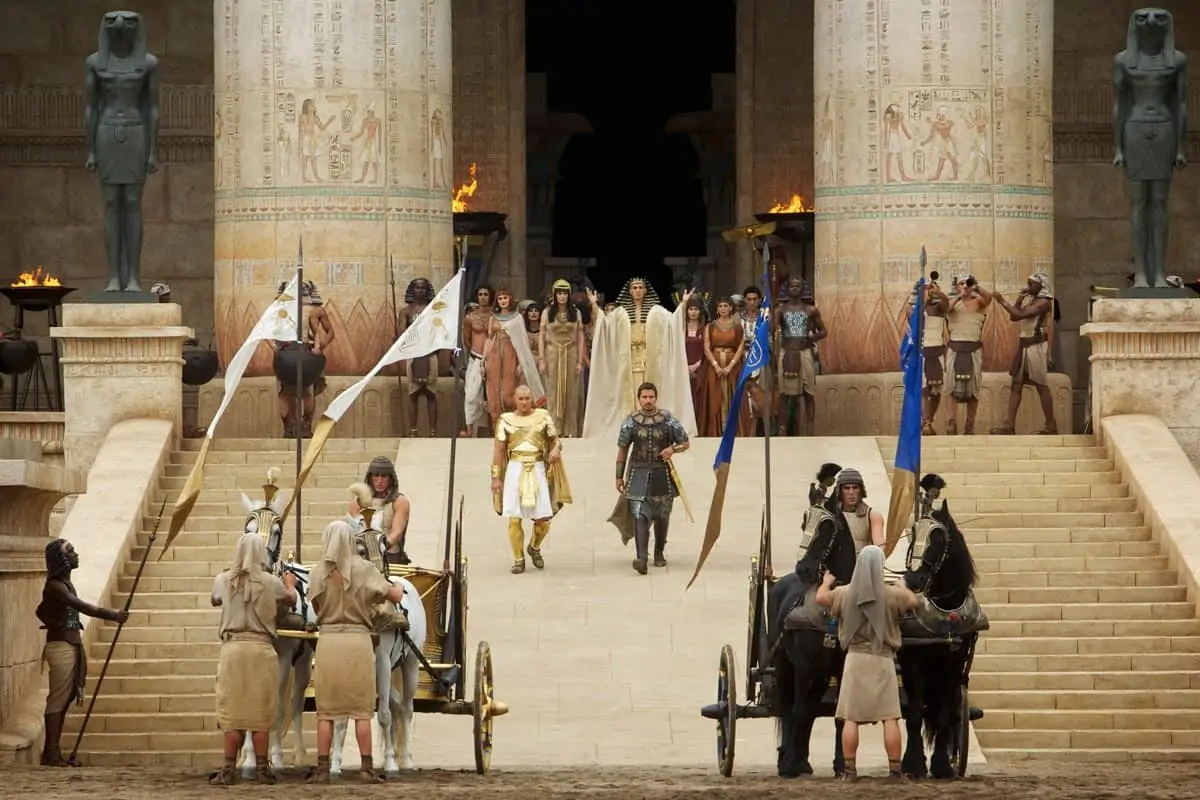
How did you visualise the film's colour palette?
DW: We wanted to make Ancient Egypt to look rich, golden, colourful and affluent for the high ranking Egyptians, which would provide a strong contrast to the lives of the slaves living in the Jewish ghetto. When we went into the ghetto and later, during the Exodus passage of the film, the visual style was all about desaturating colours and making them all look almost black and white. Those were the two main visual themes – and everything was a variation of that.
How did you shoot the interiors?
DW: We used two stages at Pinewood, which we managed to reconfigure into at least 20 different sets. It was quite a challenge – moving columns around, changing the direction of the light and dressing details with a big greenscreen at the back. It was certainly a really creative and efficient way of doing it.
And the exteriors?
DW: These were mainly done in Almeria, Spain, where we had huge exterior shots, including the stone head of Ramses. We made use of a real quarry, in an area where marble had been extracted for over 700 years, for scenes of slaves at work, plus we built the ghetto as an exterior set.
For the Exodus sequence we went to Fuerteventura in the Canary Islands, where we used a number of different beaches to film the Israelites escape from the Egyptians across the Red Sea. There, we were able to use different parts of the island. Some beaches had tidal pools that we could get people to run through, whilst another beach had sand with a thin layer of water which we could shoot horses riding through.
What were the biggest challenges for you as a cinematographer?
DW: There's no doubt that the parting of the Red Sea sequence was a major VFX challenge, but it was also my biggest challenge. The problem was having to shoot on five different beaches in Fuerteventure at different times with completely different sun direction and making it all look visually cohesive. It meant that we had to plan very carefully what we shot and when. What was a big help was that Ridley completely understood why I wanted to shoot particular scenes at a very specific time of day.
Another big challenge was day-for-night shooting. The landscapes were so stunning we wanted to be able to see a long way into the distance, which was of course impossible to light. So we shot day-for-night.
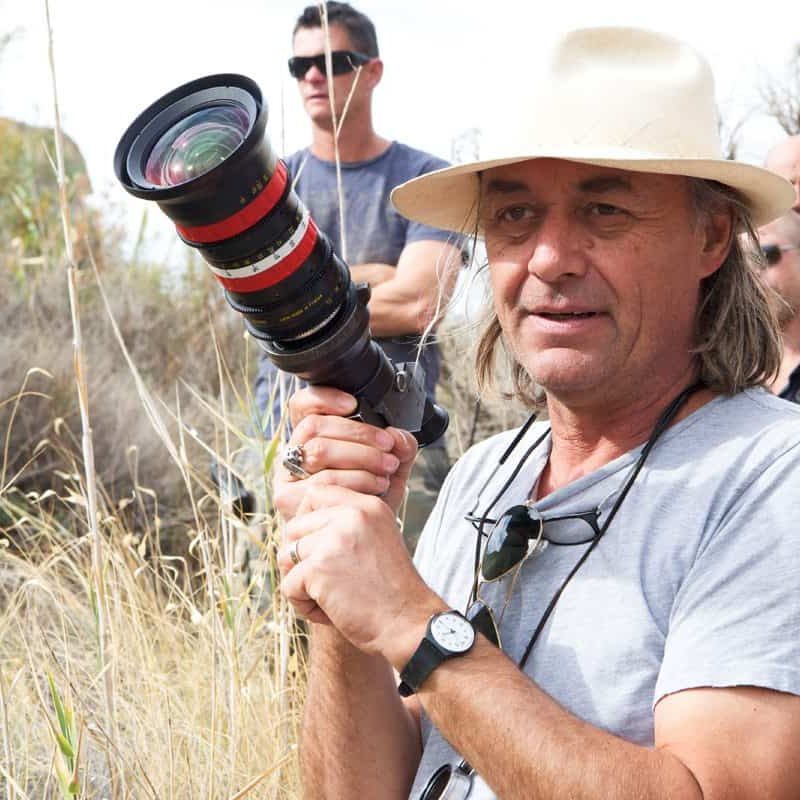
"For the Exodus sequence we went to Fuerteventura in the Canary Islands, where we used a number of different beaches to film the Israelites escape from the Egyptians across the Red Sea."
- Dariusz Wolski
What camera set-up did you use?
DW: The 6K RED Dragon had just come out, but we shot mostly on RED Epic. The resolution and dynamic range of the RED Dragon would have suited the huge landscape we had at our disposal, but at that stage last year there were simply not enough of them available to do the whole film. Plus I wouldn't really want to try out a new camera on a movie as big as this!
Having said that, I did use the RED Dragon for big wide shots – particular landscape shots with the Dragon rigged in a helicopter – but for the most part we used RED Epics and 3ality 3D rigs.
Having used a 6K camera, what are you thoughts about the RED Dragon sensor?
DW: For me the impressive thing was not all about the resolution, where I don't really think there's that much difference. While 6K (6144 x 3160 pixels) sounds like a great number you have to remember that many of the lenses which you are likely to want to use don't cover the whole sensor. It's all very well making the sensors bigger and bigger, but you have to remember that bigger sensors mean the cinematographers need a whole new range of lenses which can match them. But what I though was great about the 6K sensor was the greater dynamic range – which is a significant step up from the RED Epic.
Tell us about the DI workflow on the film?
DW: We performed live colour correction whilst monitoring Redlog directly out of the camera, using Pomfort LiveGrade and Black Magic HD link boxes to create live colour decision lists (CDLs) and setting a look for both left and right eye. These were sent to the data management supervisor, Jeroen Hendriks, who took the media, downloaded the footage and used DaVinci Resolve to apply the CDLs and Red Cine X to set the 3D convergence points.
That media was then transported to the lab which created the deliverables and archived the data overnight before being sent to Company 3, which provided the digital intermediate service. Fluent Image handled digital negative management working with VFX companies including Double Negative, MPC and Method Studios.
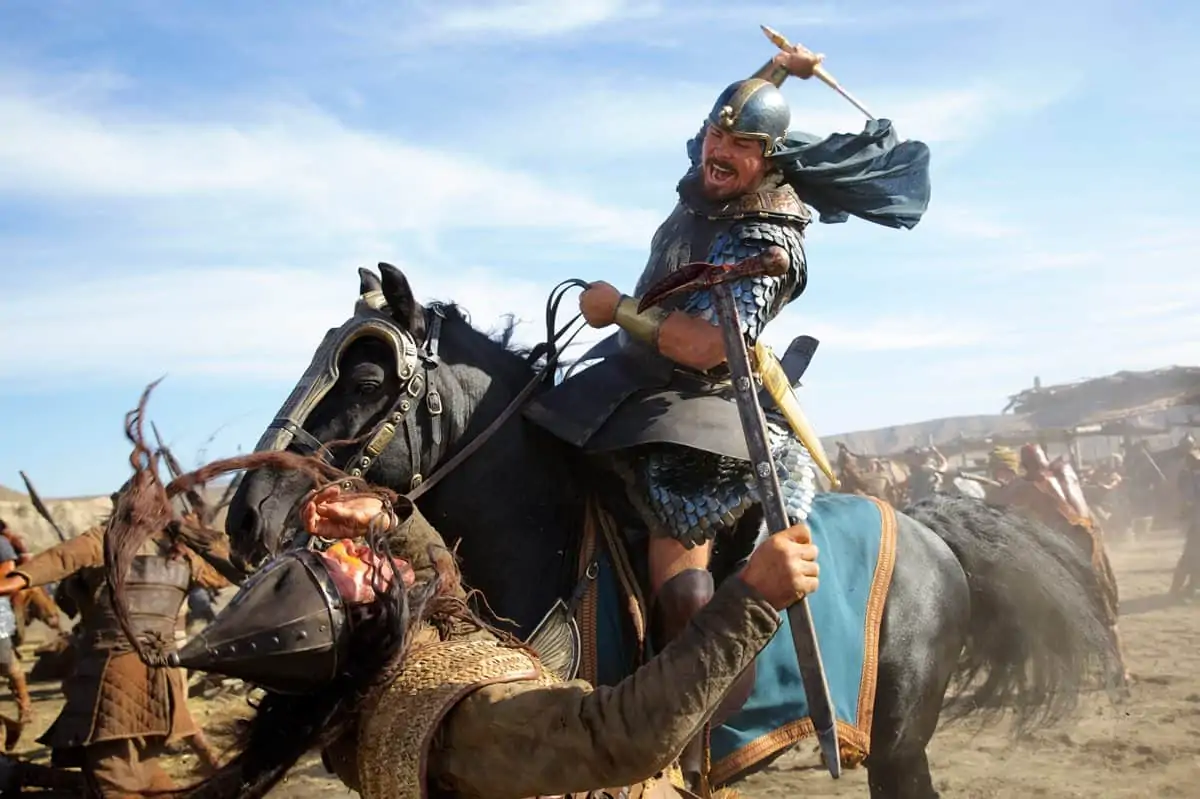
What lenses did you use?
DW: 3D rigs are, of course, cumbersome, so I use multiple rigs set up with a range of short Angenieux zoom lenses. In my view it's the best system for 3D because it means that you can change lens and recalibrate in 20 minutes. Which is still too long most of the time, so we have multiple rigs ready to go: two with wide lenses (17-40mm), two rigs with longer lenses (27-76mm). On Exodus I used an even longer rig with 40-120mm Angenieux zooms, because I find that when you have huge landscapes and big scenes with lots of people the longer lenses work pretty well. Instead of changing the lens you just change the rig to save time. On some scenes we had four rigs: two wide shot rigs, one tighter and one extra tight.
All the cameras came from Panavision, which provides a great service all over the world. With 3D a lot of stuff is prepped in LA where 3ality is based – and then brought over to the UK by Panavision.
What was your approach to lighting?
DW: We decided not to make this movie cosmetically pretty, so we had harsh, bright light outside and we wanted to repeat the same approach to lighting inside. I always light with one source and in this case I wanted a really hard shadow. So I used Soft Sun – a big box lighting unit with one bulb giving you a single shadow. We had two or three of them, which were very helpful in making the scenes look pretty real. Some shots were backlit, some were front lit – we changed it about a bit, but we went for harsh shadows.
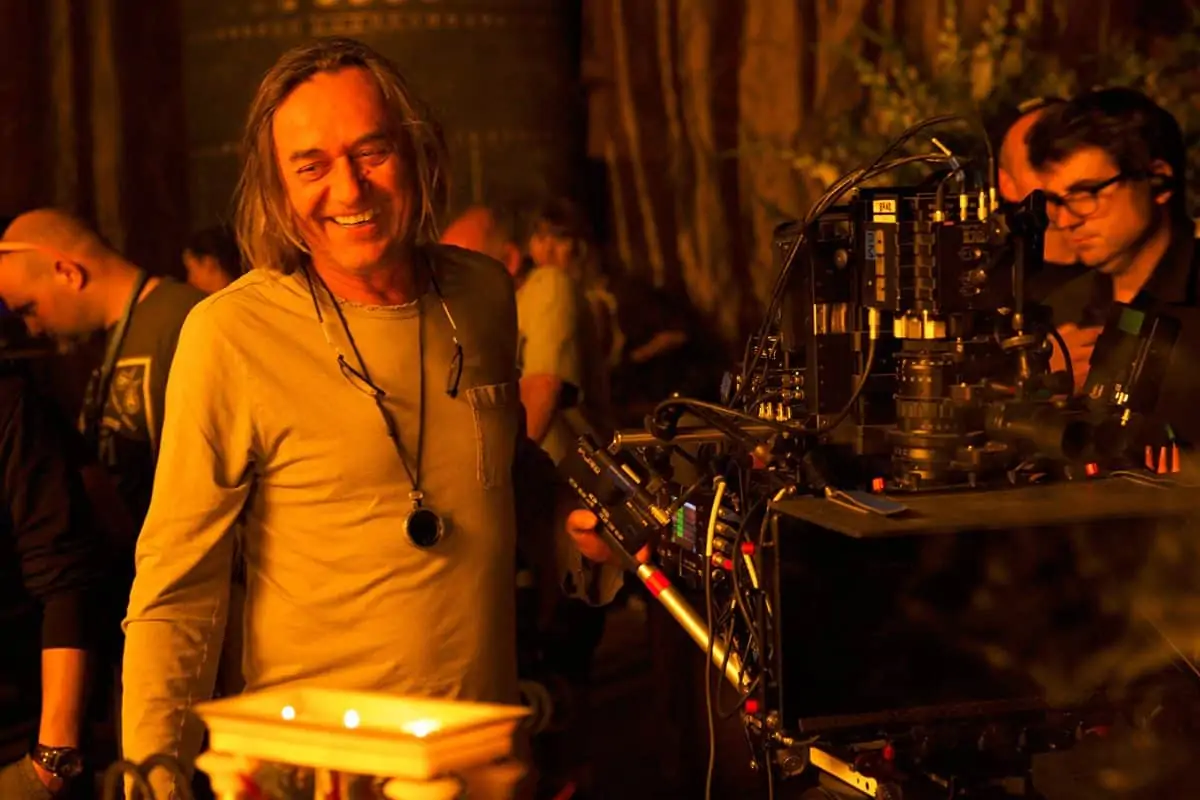
How did you film the battle scenes?
DW: We used a lot of kit to get movement into the shots, from camera cars to Technocranes with remote heads: this is one of the best pieces of kit because it can handle a very heavy 3D rig to get tracking shots.
The most difficult thing was getting the wider shots of the key battle scene where the Egyptians charge a Hittite desert encampment in chariots, where we used a large number of horses. It's the first time I've shot with lots of horses. I discovered that because they can only run fast three or four times you have to be very well organised and rehearse everything very thoroughly. You only have three or four takes and its over. It makes sense on scenes like this that you put in as many cameras as you can.



